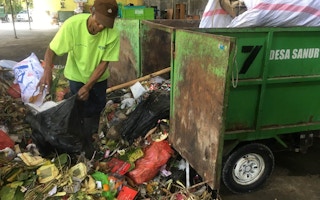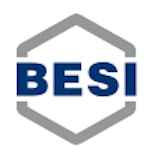By 2030, Southeast Asia’s population is expected to grow by more than 100 million people, requiring massive investments in energy production and waste management. Waste-to-energy systems could kill these two birds with one stone, especially in the region’s many remote islands and rural areas that currently use pollutive diesel generators or have unreliable or no access to electricity.
In 2019, the International Energy Agency (IEA) noted that waste-to-energy technologies are underused but gaining ground in Southeast Asian nations. In Thailand, the government has set the goal of increasing the country’s waste-to-energy capacity from about 300 megawatts now to 900 megawatts by 2037.
Vietnam has introduced fiscal tax exemptions, tariffs and other measures to encourage waste-to-energy projects, and the Asian Development Bank has also made funding available for them in the Mekong Delta. In Indonesia, the government has pledged to have 12 waste-to-energy power plants operational by 2022 which will generate up to 234 megawatts by using 16,000 tonnes of waste per day, and it also recently urged cities to build more of them.
“Energy from waste is undoubtedly becoming more important… and, when undertaken in a best-practice manner, energy-from-waste facilities can deliver environmental, health and energy benefits,” the IEA said. Both the agency and experts cautioned, however, that governments, companies and organisations aiming to construct and run such facilities have to overcome several challenges.
Challenges and competition
The IEA noted that, in Indonesia and Vietnam, the development of the waste-to-energy sector has been hampered by obstacles such as low waste-disposal fees, widespread open dumping of refuse, and insufficient waste collection and segregation infrastructure.
Some of these problems are amplified if the goal is to electrify Southeast Asia’s remote islands and rural areas, said Atem Ramsundersingh, chief executive of WEnergy Global, a Singapore-headquartered firm specialising in renewable energy infrastructure. The firm is implementing microgrid projects in the Philippines, Myanmar and Indonesia that primarily tap solar, hydro or diesel power in combination with the use of battery storage systems.
Most waste-to-energy plants require a minimum amount of feedstock that may be difficult for small island and rural populations to meet, and the communities may already be selling their waste to make a living, Ramsundersingh said. “Waste is money in Southeast Asia, and there is competition for it. You can build the power plant, but if somebody else offers a higher price for the waste and blocks your supply chain, you will have a problem,” he said.
Furthermore, waste-to-energy power plants require additional infrastructure beyond waste collection and segregation facilities, driving up their costs, he said. “If you use incineration, you need to ensure that toxic wastes and gases don’t escape the power plant, and you need to dispose of the ash. Even if you use gasification technologies for your plant, some of the waste cannot be processed and needs to be taken care of afterwards,” he explained.
Untapped potential
Still, emerging and more advanced waste-to-energy technologies could solve some of these problems. The United States-based firm Biomass Energy Systems (Besi) has developed small-scale gasification-based waste-to-energy systems that can process mixed waste and operate with volumes lower than their full capacity.
Unlike incineration, which burns waste to generate electricity, gasification uses the waste in a chemical conversion process to produce synthetic gas for power, and is significantly more environmentally-friendly. Furthermore, Besi has improved the traditional gasification process in several ways. Its technology can use not just municipal solid waste but also other waste streams, including hospital, hotel, port and other industrial waste.
Its system includes a shredder that turns all waste materials, from plastic to biosolids to wood waste, into one smooth feed stream, as well as a gasifier that can accommodate both larger chunks and smaller fractions. Even inert materials such as glass and metal, which do not contribute to the system’s energy output, can pass through the system without disrupting it, although Besi recommends removing such materials from feedstock to make room for other, more useful materials.
The Besi system can also be operated at a lower volume than full capacity and still provide power, unlike many other gasifiers that must always be at their rated capacity to produce power. “We can install a system that can process up to 30 tonnes of waste per day but operate at just 10 tonnes of waste per day if that is what is available for the moment,” said Besi president and chief executive Renee Comly.
Comly added that these characteristics make the company’s technology ideal for island use: “Most islands cannot bear the cost of incineration, either environmentally or from an emissions standpoint. Our gasification system can operate with as little as 10 tonnes of waste per day, and therefore tap the relatively smaller waste streams of islands extremely well, provide power for island utilities such as a wastewater treatment plant, port services or cold storage, and contribute to a net zero approach to waste.”
Waste-to-energy technologies could also complement, and not compete with, other sources of renewable energy to provide power to rural and island communities, she said, explaining: “For a microgrid that uses intermittent renewables such as solar and wind power, we can design a Besi system to provide baseload power that runs around the clock.”
Comly said that the company is looking to partner project developers across Southeast Asia to use its technology to solve ocean debris and plastic waste problems, including by improving the region’s islands’ sustainability.
The IEA noted that for waste-to-energy to gain traction in Southeast Asia, it must be deployed with other measures, such as waste-disposal fees in the form of landfill taxation or gate fees. Governments and companies should also consult local communities before embarking on waste-to-energy projects to boost public confidence in them.
The sector’s potential in the region is largely untapped so far, and its value may lie more in managing waste volumes than in generating electricity, the IEA said. “Nevertheless, it does deliver electricity and heat,” it said. “This can help offset rising energy demand and, since the waste can be domestically sourced, support energy supply diversification.”




















